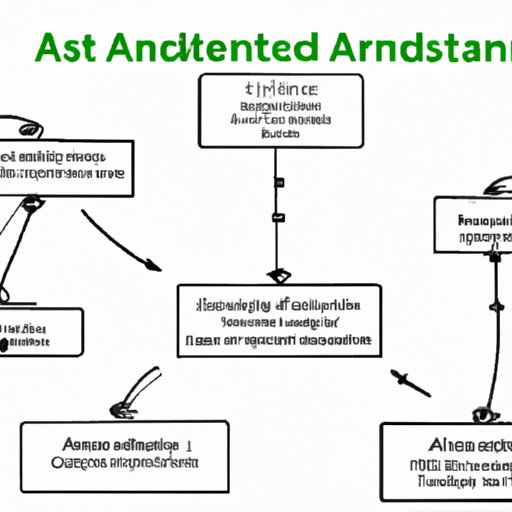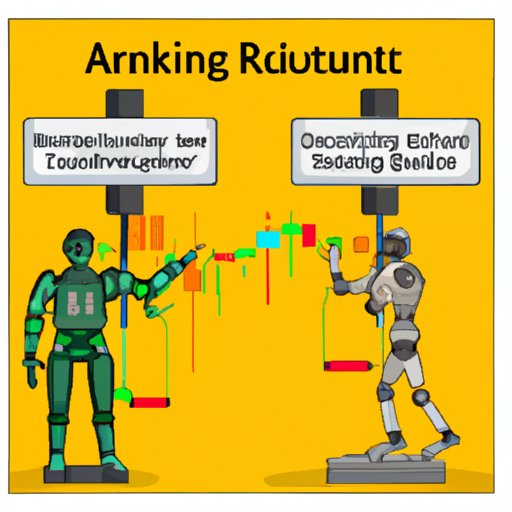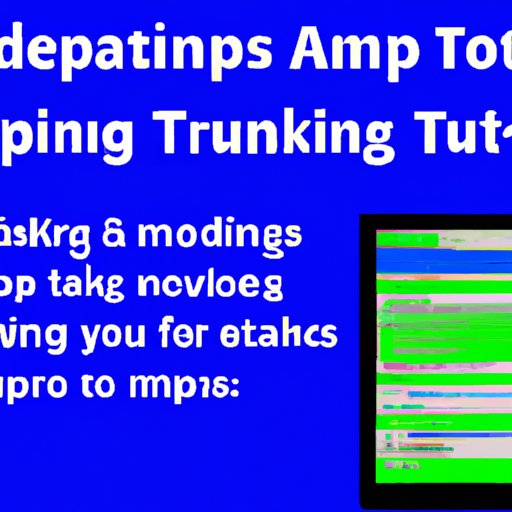Introduction
An automated trading system (ATS) is a computer program that automatically submits buy and sell orders to a financial market. The goal of an ATS is to execute trades based on pre-defined trading rules without manual intervention. ATSs are used by a variety of traders, including institutional investors, hedge funds, algorithmic traders, and retail investors. Automated trading systems have become increasingly popular in recent years due to their ability to reduce costs, increase efficiency, and improve the overall trading experience.

Definition and Overview of Automated Trading Systems
An automated trading system (ATS) is a computer program that automatically submits buy and sell orders to a financial market. An ATS can be programmed to follow specific strategies and execute trades based on pre-defined trading rules without the need for manual intervention. ATSs are used by a variety of traders, including institutional investors, hedge funds, algorithmic traders, and retail investors.
Automated trading systems are typically programmed using software packages such as MetaTrader 4, NinjaTrader, or TradeStation. These software packages provide traders with access to real-time market data, charting tools, and technical indicators. Traders can then use this data to build and backtest trading algorithms, which can then be deployed in real-time markets.
Benefits of Automated Trading Systems
Automated trading systems offer a number of advantages over traditional manual trading, including increased speed and accuracy, reduced costs, improved efficiency, and better risk management. By automating the process of entering and exiting trades, ATSs can reduce errors and help ensure that trades are executed at the best possible prices.
In addition, automated trading systems can help traders manage risk more effectively. By programming trading rules into an ATS, traders can set predetermined entry and exit points, as well as define parameters for stop losses and take profits. This helps ensure that traders stay within their desired risk levels and maximize their potential returns.
Finally, automated trading systems can help traders save time and effort. By automating the process of entering and exiting trades, traders can focus on other aspects of their trading strategy, such as market research and analysis.
Designing and Implementing an Automated Trading System
Designing and implementing an automated trading system involves a number of steps. Before building an ATS, it is important to understand market data and technical indicators, as well as how they can be used to create trading strategies. It is also important to understand the different types of automated trading strategies, as well as the risks and challenges associated with each type.
Steps Involved in Designing and Implementing an Automated Trading System
The first step in designing and implementing an automated trading system is to collect and analyze market data. This includes gathering information such as historical price data, economic indicators, news events, and technical indicators. This data can then be used to identify trading opportunities and develop a trading strategy.
The next step is to build a trading algorithm. This involves coding the trading strategy into an automated system that can be used to generate buy and sell signals. Once the trading algorithm has been developed, it must be backtested and optimized to ensure that it is generating the desired results.
Once the trading algorithm has been tested and optimized, it can then be deployed in a live market. It is important to note that the trading algorithm may need to be adjusted as market conditions change. As such, it is important to monitor the performance of the system and make adjustments as needed.
Understanding Market Data and Technical Indicators
Before building an automated trading system, it is important to understand market data and technical indicators. Market data includes historical price data, economic indicators, news events, and other data points that can be used to identify trading opportunities. Technical indicators are mathematical calculations that can be used to analyze price movements and identify trends.
By understanding market data and technical indicators, traders can develop trading strategies that are tailored to their individual needs and goals. For example, a trader might develop a trend-following strategy that uses moving averages to identify entry and exit points. Alternatively, a trader might develop a momentum strategy that uses relative strength index (RSI) to identify overbought and oversold conditions.
Building a Trading Algorithm
Once the trading strategy has been identified, it must be coded into a trading algorithm. A trading algorithm is a set of instructions that tell the computer when to buy and sell. The trading algorithm should include all of the parameters needed to execute trades, such as entry and exit points, stop loss and take profit levels, position sizing, and order types.
The trading algorithm should also include risk management parameters, such as maximum drawdown, maximum loss per trade, and maximum position size. These parameters will help ensure that the trading system is operating within the trader’s risk tolerance.
Backtesting and Optimizing the Trading Algorithm
Once the trading algorithm has been coded, it must be backtested and optimized. Backtesting is the process of testing the trading algorithm on historical data to determine its performance. This allows traders to evaluate the effectiveness of the trading strategy and make any necessary adjustments.
Optimization is the process of adjusting the parameters of the trading algorithm to improve its performance. This can involve tweaking the entry and exit points, changing the position size, or adjusting the risk management parameters. Optimization can help improve the performance of the trading system and ensure that it is operating within the trader’s risk tolerance.
Types of Automated Trading Strategies
There are a variety of automated trading strategies that can be used to capitalize on market movements. Some of the most common types of automated trading strategies include trend-following strategies, range-bound strategies, momentum strategies, arbitrage strategies, and high frequency trading strategies.
Trend-Following Strategies
Trend-following strategies are designed to capitalize on long-term price trends. These strategies typically use technical indicators such as moving averages to identify entry and exit points. Trend-following strategies can be used in both bull and bear markets, but they tend to perform best in trending markets.
Range-Bound Strategies
Range-bound strategies are designed to capitalize on short-term price fluctuations. These strategies typically use support and resistance levels to identify entry and exit points. Range-bound strategies can be used in both bull and bear markets, but they tend to perform best in range-bound markets.
Momentum Strategies
Momentum strategies are designed to capitalize on short-term price momentum. These strategies typically use technical indicators such as relative strength index (RSI) to identify overbought and oversold conditions. Momentum strategies can be used in both bull and bear markets, but they tend to perform best in volatile markets.
Arbitrage Strategies
Arbitrage strategies are designed to capitalize on price discrepancies between two or more markets. These strategies typically involve buying an asset in one market and simultaneously selling it in another market. Arbitrage strategies can be used to generate risk-free profits, but they require lightning-fast execution speeds and precise timing.
High Frequency Trading Strategies
High frequency trading strategies are designed to capitalize on small price movements. These strategies typically involve trading large volumes of assets at very high speeds. High frequency trading strategies can be used to generate profits, but they require significant capital and sophisticated technology.

Challenges and Risks of Automated Trading Systems
Although automated trading systems can offer a number of advantages, there are also a number of risks and challenges associated with them. It is important to understand these risks before deploying an automated trading system in a live market.
Risk Management
The primary challenge of automated trading systems is risk management. Since automated trading systems are programmed to follow predetermined trading rules, it is important to ensure that these rules are properly defined and followed. This includes setting appropriate risk parameters, such as position size and stop losses, as well as monitoring the performance of the system and making adjustments as needed.
Dealing with Unexpected Events
Another challenge of automated trading systems is dealing with unexpected events. Unexpected events, such as sudden market moves or news announcements, can cause significant losses if not managed properly. To mitigate this risk, traders should monitor the market and adjust their trading strategies as needed.
System Performance and Reliability
Finally, it is important to ensure that the automated trading system is performing as expected. This means regularly monitoring the performance of the system and making adjustments as needed. It is also important to ensure that the system is reliable and secure, as any downtime or security breaches could lead to significant losses.

Tips for Setting Up and Managing Automated Trading Systems
To ensure that an automated trading system is properly set up and managed, it is important to follow certain best practices. Here are some tips for setting up and managing automated trading systems:
Choosing the Right Broker
When choosing a broker, it is important to find one that offers the features and services needed to run an automated trading system. This includes access to real-time market data, low commissions, fast order execution, and reliable customer service.
Monitoring System Performance
It is important to regularly monitor the performance of the system to ensure that it is operating as expected. This includes checking the system’s profitability, drawdown, and win rate, as well as ensuring that the system is following the predetermined trading rules.
Testing and Adjusting Strategies
It is also important to regularly test and adjust the trading strategies to ensure that they are still effective. This includes running backtests and optimizing the trading algorithm, as well as making adjustments as market conditions change.
Establishing Risk Parameters
When setting up an automated trading system, it is important to establish risk parameters to ensure that the system is operating within the trader’s risk tolerance. This includes setting position size, stop losses, and take profits, as well as monitoring the system’s performance and making adjustments as needed.
Staying Up to Date with Market Changes
Finally, it is important to stay up to date with market changes to ensure that the system is still effective. This includes monitoring news events, economic indicators, and technical indicators, as well as making adjustments to the trading strategy as needed.
Conclusion
Automated trading systems offer a number of benefits, including increased speed and accuracy, reduced costs, improved efficiency, and better risk management. However, there are also a number of risks and challenges associated with automated trading systems, such as risk management, dealing with unexpected events, and system performance and reliability. In order to ensure that an automated trading system is properly set up and managed, it is important to follow certain best practices, such as choosing the right broker, monitoring system performance, testing and adjusting strategies, establishing risk parameters, and staying up to date with market changes.
(Note: Is this article not meeting your expectations? Do you have knowledge or insights to share? Unlock new opportunities and expand your reach by joining our authors team. Click Registration to join us and share your expertise with our readers.)
